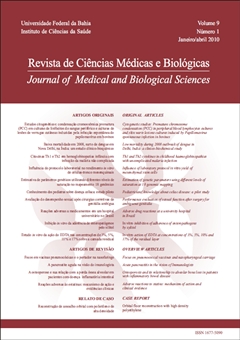Down’s Syndrome: features related to the stomatognathic system
DOI:
https://doi.org/10.9771/cmbio.v9i1.4732Keywords:
Down Syndrom Quality of Life Malocclusion Dental Caries PeriodontitisAbstract
Down Syndrome is a congenital anomaly caused by the presence of an extra chromosome in pair 21. The patient with this syndrome shows alterations in the stomatognathic system: teeth, tongue, periodontium, maxilla, mandible, occlusion and temporomandibular joint. The main oral manifestations are oral breathing, maxillary atresia, fissured tongue, dental agenesis, periodontal disease, late dental eruption and malocclusion, besides several dental alterations. The Down Syndrome’s carrier needs specialized and multidisciplinary treatment, due to variations of the affected structures. The early diagnosis and intervention by the dentist allow an interruption in the progress and also impedes the consequences of malformations, as well as an improvement in quality of life.Downloads
Download data is not yet available.
Downloads
Published
2010-11-18
How to Cite
Carvalho, A. C. A. de, Campos, P. S. F., & Crusoé-Rebello, I. (2010). Down’s Syndrome: features related to the stomatognathic system. Journal of Medical and Biological Sciences, 9(1), 49–52. https://doi.org/10.9771/cmbio.v9i1.4732
Issue
Section
Review Articles
License
The Journal of Medical and Biological Sciences reserves all copyrights of published works, including translations, allowing, however, their subsequent reproduction as transcription, with proper citation of source, through the Creative Commons license. The periodical has free and free access.


